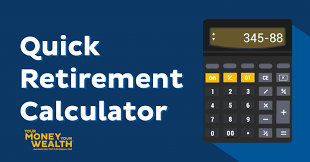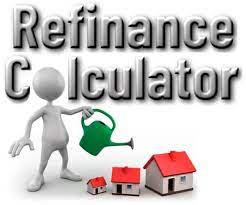Master your business’s asset management and tax planning with a powerful tool like the Depreciation Calculator ( Depreciation Formula Calculator). This will simplify the depreciation process, empowering you to make informed financial decisions and contribute to your business’s long-term success. In this article We will discuss in the detail like Depreciation Calculation Methods etc.
Depreciation Calculator
What is depreciation? — The depreciation definition
Depreciation is a concept in accounting and finance that refers to the decline in the value of an asset over time. In other words, as an asset gets older or is used more, its value decreases. This decrease in value is recorded as an expense on a company’s income statement and reduces the company’s taxable income.
There are many different methods of calculating depreciation, but the most common are the straight-line method and the accelerated method. The straight-line method spreads the cost of an asset evenly over its useful life, while the accelerated method allows for a larger expense in the early years of an asset’s life and a smaller expense in the later years.
Depreciation is important for companies to understand because it affects their financial statements and tax obligations. By recording depreciation expenses, companies can accurately reflect the value of their assets and their true profitability. Additionally, understanding the various methods of calculating depreciation can help companies make informed decisions about purchasing and replacing assets.
Overall, depreciation is a crucial concept in accounting and finance that helps companies accurately reflect the value of their assets and their true profitability. By understanding the depreciation definition and the various methods of calculating depreciation, companies can make informed decisions and ensure financial stability.
Methods of Depreciation
There are several methods of calculating depreciation, but three of the most common methods are straight-line, declining balance, and sum of the years’ digits.
1.Straight-Line Depreciation Method
The straight-line method is the simplest and most commonly used method of calculating depreciation. It spreads the cost of an asset evenly over its useful life. To calculate depreciation using the straight-line method, you simply divide the cost of the asset by its useful life.
For example, if a company buys a machine for $10,000 and expects it to last 5 years, it would record $2,000 of depreciation expense each year ($10,000 divided by 5 years).
Declining Balance Depreciation Method
The declining balance method is an accelerated method of calculating depreciation that allows for a larger expense in the early years of an asset’s life and a smaller expense in the later years. To calculate depreciation using the declining balance method, you multiply the book value of the asset by a predetermined percentage.
For example, if a company buys a machine for $10,000 and uses a depreciation rate of 40%, it would record $4,000 of depreciation expense in the first year ($10,000 multiplied by 40%). In the second year, the book value of the asset would be reduced to $6,000, and the depreciation expense would be $2,400 ($6,000 multiplied by 40%).
Sum of the Years’ Digits Depreciation Method
The sum of the years’ digits method is another accelerated method of calculating depreciation. It takes into account the fact that an asset is more valuable in its early years and less valuable in its later years. To calculate depreciation using the sum of the years’ digits method, you add up the digits of the useful life of the asset and divide that by the number of years of the asset’s life.
For example, if a company buys a machine for $10,000 and expects it to last 5 years, it would calculate the sum of the years’ digits as follows: 5+4+3+2+1=15. Then, in the first year, the company would record $4,000 of depreciation expense ($10,000 multiplied by 5/15). In the second year, the company would record $3,200 of depreciation expense ($10,000 multiplied by 4/15), and so on.
Understanding the different methods of calculating depreciation is important for companies to accurately reflect the value of their assets and their true profitability. By choosing the right method for their assets, companies can make informed decisions about purchasing and replacing assets and ensure financial stability.
Methods of Depreciation Formula
There are several methods of calculating depreciation, but three of the most common methods are straight-line, declining balance, and sum of the years’ digits. In this article, we will explore the formulas for each of these methods.
Formula for Straight-Line Depreciation Method
The straight-line method is the simplest and most commonly used method of calculating depreciation. It spreads the cost of an asset evenly over its useful life. The formula for calculating depreciation using the straight-line method is as follows:
Depreciation Expense = (Cost of Asset – Salvage Value) / Useful Life
Where:
- Cost of Asset = the cost to acquire or produce the asset
- Salvage Value = the expected value of the asset at the end of its useful life
- Useful Life = the estimated useful life of the asset in years
For example, if a company buys a machine for $10,000 and expects it to last 5 years with no salvage value, the formula would be:
Depreciation Expense = ($10,000 – $0) / 5 = $2,000 per year
Formula for Declining Balance Depreciation Method
The declining balance method is an accelerated method of calculating depreciation that allows for a larger expense in the early years of an asset’s life and a smaller expense in the later years. The formula for calculating depreciation using the declining balance method is as follows:
Depreciation Expense = (Net Book Value at Beginning of Year x Depreciation Rate)
Where:
- Net Book Value = the book value of the asset at the beginning of the year
- Depreciation Rate = a percentage determined by dividing 1 by the useful life of the asset and multiplying it by a factor (e.g. 2 for double-declining balance)
For example, if a company buys a machine for $10,000 and uses a depreciation rate of 40% with no salvage value, the formula would be:
Year 1 Depreciation Expense = ($10,000 – $0) x 40% = $4,000 Year 2 Depreciation Expense = ($10,000 – $4,000) x 40% = $2,400
- Formula for Sum of the Years’ Digits Depreciation Method
The sum of the years’ digits method is another accelerated method of calculating depreciation. It takes into account the fact that an asset is more valuable in its early years and less valuable in its later years. The formula for calculating depreciation using the sum of the years’ digits method is as follows:
Depreciation Expense = ((Cost of Asset – Salvage Value) x Remaining Years of Useful Life) / Sum of the Years’ Digits
Where:
- Cost of Asset = the cost to acquire or produce the asset
- Salvage Value = the expected value of the asset at the end of its useful life
- Remaining Years of Useful Life = the number of years left in the asset’s useful life
- Sum of the Years’ Digits = the sum of the digits of the useful life of the asset
For example, if a company buys a machine for $10,000 and expects it to last 5 years with no salvage value, the formula would be:
Sum of the Years’ Digits = 5+4+3+2+1=15
Year 1 Depreciation Expense = ($10,000 – $0) x 5/15 = $3,333.33 Year 2 Depreciation Expense = ($10,000 – $0) x 4/15 = $2,666.67
Understanding the formulas for the different methods of calculating depreciation is important for companies to accurately reflect the value of their assets and their true profitability. By choosing the right method for their assets, companies can make informed decisions about purchasing and replacing assets and ensure financial stability.
Units of Production Depreciation Method
There are several methods of calculating depreciation, and one of the less common but still important methods is the units of production depreciation method. In this article, we will explore what the units of production depreciation method is and how it works.
The units of production depreciation method is a method of calculating depreciation that takes into account the actual usage or production of an asset. It is particularly useful for assets that are used heavily in the production of goods or services, such as machinery or equipment. Under this method, the depreciation expense for a given year is calculated based on the number of units produced or the number of hours an asset is used.
To calculate the depreciation expense using the units of production depreciation method, you need to follow the steps below:
Determine the total number of units the asset is expected to produce or the total number of hours the asset is expected to be used over its useful life.
Determine the cost of the asset and any salvage value.
Calculate the depreciation per unit or per hour by dividing the total cost of the asset minus the salvage value by the total number of units or hours expected to be produced or used.
Multiply the depreciation per unit or per hour by the number of units produced or the number of hours used in a given year to determine the depreciation expense for that year.
For example, suppose a company buys a machine for $50,000 with an expected useful life of 10,000 hours and an expected salvage value of $5,000. If the company uses the machine for 1,000 hours in the first year, the depreciation expense would be calculated as follows:
Depreciation per Hour = ($50,000 – $5,000) / 10,000 hours = $4 per hour Depreciation Expense = $4 per hour x 1,000 hours = $4,000
The units of production depreciation method is a useful method for companies that heavily rely on their assets for production. By taking into account the actual usage of an asset, companies can more accurately reflect the value of the asset and their true profitability. However, it may require more record-keeping and calculations than other methods of depreciation.
Partial Year Depreciation
Depreciation is typically calculated annually, but what happens when an asset is purchased or disposed of during the year? In this article, we will explore what partial year depreciation is and how it works.
Partial year depreciation is the depreciation expense that is recorded for an asset that is purchased or disposed of during the year. When an asset is purchased or disposed of during the year, the depreciation expense needs to be adjusted to reflect the portion of the year the asset was owned. This ensures that the depreciation expense accurately reflects the value of the asset during the time it was owned.
To calculate the partial year depreciation, you need to follow the steps below:
Determine the number of days the asset was owned during the year.
Determine the cost of the asset and any salvage value.
Determine the useful life of the asset in years.
Calculate the depreciation expense for the portion of the year the asset was owned by dividing the annual depreciation expense by 365 and multiplying the result by the number of days the asset was owned.
For example, suppose a company buys a machine for $10,000 with an expected useful life of 5 years on July 1st. If the company uses the straight-line depreciation method, the annual depreciation expense would be $2,000 ($10,000 divided by 5 years). The partial year depreciation expense for the first year would be calculated as follows:
Number of Days Owned = 184 (July 1st to December 31st is 184 days) Depreciation Expense = ($2,000 / 365) x 184 = $1,007.12
The partial year depreciation expense for the first year would be $1,007.12 instead of the full year depreciation expense of $2,000. The remaining years of the asset’s useful life would use the full year depreciation expense.
Partial year depreciation is an important concept for companies to understand to ensure that their depreciation expenses accurately reflect the value of their assets. By accounting for the partial year depreciation, companies can more accurately track their financial performance and make informed decisions about asset purchases and disposals.

Salvage Value
Salvage value is a critical concept in accounting and finance that refers to the value of an asset at the end of its useful life. In other words, salvage value is the estimated amount that an asset can be sold for at the end of its useful life. Salvage value is an important consideration when calculating depreciation and can affect the amount of depreciation expense recorded in a company’s financial statements.
To calculate the depreciation expense for an asset, you need to determine its cost, useful life, and salvage value. The salvage value is subtracted from the cost of the asset to determine the depreciable basis of the asset. The depreciable basis is then divided by the useful life of the asset to determine the annual depreciation expense.
For example, suppose a company buys a machine for $50,000 with an expected useful life of 10 years and an expected salvage value of $5,000. The depreciable basis would be $45,000 ($50,000 minus $5,000). The annual depreciation expense would be $4,500 ($45,000 divided by 10 years).
The salvage value can affect the amount of depreciation expense recorded in a company’s financial statements. A higher salvage value will result in a lower depreciation expense, while a lower salvage value will result in a higher depreciation expense. It is important for companies to estimate the salvage value accurately to ensure that their financial statements accurately reflect the value of their assets.
Estimating the salvage value can be challenging, as it depends on many factors such as the condition of the asset at the end of its useful life, the demand for the asset, and market conditions. Companies may use historical data, market research, or expert opinions to estimate the salvage value of an asset.
In addition to affecting the amount of depreciation expense recorded, salvage value can also affect the decision-making process for asset purchases and disposals. When considering the purchase of an asset, companies may consider the salvage value of the asset at the end of its useful life to determine the total cost of ownership. When disposing of an asset, companies may consider the salvage value to determine the net loss or gain on the disposal.
In conclusion, salvage value is an important concept in accounting and finance that refers to the value of an asset at the end of its useful life. Accurately estimating the salvage value is crucial for calculating depreciation and ensuring that financial statements accurately reflect the value of assets. It can also affect the decision-making process for asset purchases and disposals.
Understanding Depreciation Formula Calculator
Depreciation is a financial concept that represents the decrease in the value of assets over time. It is essential for businesses and individuals when determining the worth of their assets, especially for accounting and tax purposes. The Depreciation Formula Calculator is a handy tool that simplifies the calculation process, making it easier to assess asset values accurately.
In this article, we will explore how a Depreciation Formula Calculator can streamline the process.
Using a Depreciation Formula Calculator:
A Depreciation Formula Calculator simplifies the complex calculations required for depreciation. To use it:
Input Information: Gather data on the asset’s initial cost, expected salvage value, and its estimated useful life.
Select Depreciation Method: Choose the depreciation method that best suits your needs, whether it’s straight-line, declining balance, or units of production.
Calculate: Enter the values into the calculator, and it will provide you with the annual depreciation amount and the remaining book value of the asset.
Benefits of a Depreciation Formula Calculator:
Accuracy: These calculators eliminate the possibility of mathematical errors, ensuring precise depreciation calculations.
Time-Efficiency: Manual depreciation calculations can be time-consuming. A calculator speeds up the process, saving you valuable time.
Variety of Methods: Depreciation calculators often support multiple methods, allowing users to choose the most appropriate one for their specific situation.
Depreciation is a fundamental concept in finance and accounting, crucial for determining asset values and managing tax liabilities. The Depreciation Formula Calculator is a valuable tool for simplifying and accelerating the often complex calculations associated with depreciation. Whether you are a business owner, accountant, or an individual managing assets, a Depreciation Formula Calculator can make the process more straightforward and accurate, ultimately helping you make more informed financial decisions.
Frequently Asked Questions
1. What is depreciation?
- Depreciation is a financial concept that represents the decrease in the value of tangible assets, such as machinery, equipment, buildings, or vehicles, over time. It accounts for factors like wear and tear, obsolescence, and the passage of time.
2. Why is depreciation important?
- Depreciation is important for financial reporting, tax planning, and asset valuation. It helps in accurately representing the cost of using assets, claiming tax deductions, and assessing the real value of assets.
3. What are the common methods of calculating depreciation?
- There are several methods to calculate depreciation, including:
- Straight-Line Depreciation
- Declining Balance Depreciation
- Units of Production Depreciation
- Sum-of-the-Years’-Digits Depreciation
4. What is straight-line depreciation?
- Straight-line depreciation evenly distributes the cost of an asset over its useful life. The formula is: Depreciation Expense = (Cost of Asset – Salvage Value) / Useful Life.
5. What is declining balance depreciation?
- Declining balance depreciation accelerates depreciation by applying a constant rate to the remaining book value of the asset each year.
6. How does units of production depreciation work?
- Units of production depreciation calculates depreciation based on the actual usage or production of the asset. The more an asset is used, the higher the depreciation.
7. What is the salvage value in depreciation calculations?
- Salvage value is the estimated value of an asset at the end of its useful life. It is used to determine the portion of the asset’s cost that can be depreciated.
8. What is the book value of an asset?
- The book value of an asset is the original cost of the asset minus the accumulated depreciation. It represents the current value of the asset on a company’s balance sheet.
9. How can I calculate depreciation manually?
- You can calculate depreciation manually by applying one of the depreciation methods and using the relevant formula. For example, for straight-line depreciation, you would use the formula: Depreciation Expense = (Cost of Asset – Salvage Value) / Useful Life.
10. Why should I use a Depreciation Formula Calculator?
A Depreciation Formula Calculator simplifies and speeds up the depreciation calculation process, reducing the likelihood of errors and allowing you to choose from multiple depreciation methods.
11. Can depreciation be applied to intangible assets like patents or trademarks?
Depreciation is typically applicable to tangible assets. Intangible assets like patents and trademarks are amortized rather than depreciated.
12. How does depreciation affect taxes?
Depreciation allows businesses and individuals to claim tax deductions based on the decrease in the value of their assets. This reduces taxable income and, consequently, the amount of tax owed.
13. How often should I review depreciation calculations for my assets?
You should review depreciation calculations regularly, especially when the asset’s condition or usage changes significantly. This helps in maintaining accurate financial records and tax planning.
14. Can depreciation be reversed or adjusted if the asset’s condition changes?
In some cases, if the condition or usage of the asset changes significantly, adjustments to depreciation may be necessary. It’s important to consult with a financial or tax professional to ensure accuracy and compliance.
Depreciation Calculator- Depreciation Formula Calculator – Depreciation Calculation Methods
Legal Notices and Disclaimer
All Information contained in and produced by the ModernCalculators.com is provided for educational purposes only. This information should not be used for any Financial planning etc. Take the help from Financial experts for any Finace related Topics. This Website will not be responsible for any Financial loss etc.





